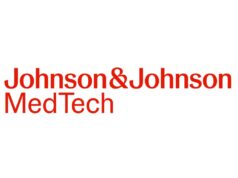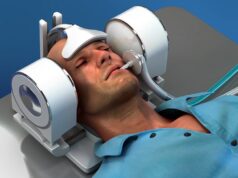
Results from IST-3, published in The Lancet in May and presented at the European Stroke Conference in Lisbon, found that for the type of patients recruited, despite the early hazards, thrombolysis within six hours improved functional outcome in acute ischaemic stroke patients. The international, randomised, controlled trial also shed light on the effects of alteplase on an older patient population.
IST-3, a multicentre, open-treatment trial, in which more than half of the cohort was aged over 80, also found that the benefit of the drug was not reduced in elderly patients.
Peter Sandercock, professor of Medical Neurology and honorary consultant neurologist, director, Edinburgh Neuroscience, Edinburgh, UK, and one of the co-chief investigators of the trial said, “Most importantly, IST-3 has shown that thrombolytic therapy is of clear benefit to patients aged over 80 years. We have demonstrated benefit in a wider range of patients than is covered by the current European Union approval for the drug and the trial clearly reinforces the need to treat patients as soon as possible after stroke, and if at all possible, within the first three hours.”
Investigators enrolled 3,035 patients in 12 countries; 1,515 were in the group receiving 0.9mg/kg intravenous recombinant tissue plasminogen activator (rt-PA) and 1,520 were in the control group. Fifty three per cent of the cohort (ie, 1,617) patients, were older than 80 years of age. The primary analysis was of the proportion of patients alive and independent, as defined by an Oxford Handicap Score (OHS) of 0–2 at six months.
Sandercock noted that IST-3 was over “three times larger” than any previous trial looking at thrombolytic therapy for stroke. “The sum total of evidence before IST-3 was 4,000 patients and we have added another 3,000 patients, so we have almost doubled the world evidence. No previous trial included a significant number of older patients, so this is completely new data about older patients,” he said.
Triallists found that at six months, 554 (37%) patients in the rt-PA group vs. 534 (35%) in the control group were alive and independent (OHS 0–2; adjusted odds ratio 1.13, 95% CI 0.95–1.35, p=0.181; a non-significant absolute increase of 14/1,000, 95% CI −20 to 48). However, an ordinal analysis showed a significant shift in OHS scores; common OR 1.27 (95% CI 1.10—1.47, p=0.001). They also found that fatal or non-fatal symptomatic intracranial haemorrhage within seven days occurred in 104 (7%) patients in the rt-PA group vs. 16 (1%) in the control group (adjusted OR 6.94, 95% CI 4.07–1·8; absolute excess 58/1,000, 95% CI 44–72). More deaths occurred within seven days in the rt-PA group (163 [11%]) than in the control group (107 [7%], adjusted OR 1.60, 95% CI 1.22–2.08, p=0.001; absolute increase 37/1,000, 95% CI 17–57), but between seven days and six months there were fewer deaths in the rt-PA group than in the control group, so that by six months, similar numbers, in total, had died (408 [27%] in the rt-PA group vs. 407 [27%] in the control group).
Sandercock said, “The difference between the two groups was equivalent to treatment increasing the number of patients who were alive and independent by 14 per 1,000. That difference is not statistically significant, but it is potentially clinically significant. When you compare the disability scores in patients who have been treated to those who have not been treated, on average, treatment reduces the level of disability. This score was statistically significant. So you can say to the patient, if you get the treatment, the odds of you surviving with less disability are 27% greater with treatment.
“If you are a strict critic of the trial you will say the primary analysis was neutral and that thrombolysis does not work, but if you are a doctor who is interested in whether it is going to make my patients better, you might say that it does. In regards to the more early deaths in the thrombolysis groups and fatal intracerebral bleeds, like every effective treatment, thrombolytic therapy carries an immediate risk. So what a patient has to decide is how much they can cope with the level of disability that they have just after a stroke. For example in the case of a patient who is paralysed down the right side and cannot speak, who has previously said to their partner ‘I do not want to live in this state’. Such a partner might well tell a doctor that the patient is prepared to take the risk of a bleed now, if it gives them a chance of being alive without disability further down the line. On the other hand, you might have a patient in their 90s who might have a very mild stroke and who is risk averse. The stroke has not become a major threat to their quality of life, and they may well decide not to have treatment.
You have to weight up risks and benefits, taking into account several factors such as how severe the stroke is, how quickly the patient has arrived in hospital etc.”
Treatment by intravenous rt-PA after 4.5 hours…
Sandercock told NeuroNews, “The question of 4.5 hours is an interesting one. We can definitively say that the benefit of thrombolytic treatment is maximal within three hours, and within the three hours the sooner you can do it the better. The main clinical implication is that we have to work even harder to get patients to recognise those symptoms and get to the hospital quickly. If a patient, for whatever reason arrives late to the hospital, after 4.5 hours, these data suggest that treatment might be beneficial. What we have said is that there are some randomised trials going on designed to find out which of those late patients can safely be treated, or which ones are most likely to respond to treatment. So should you be treating patients who come in 4.5 hours after a stroke? It is still a research question and such patients could be included in trials where you compare thrombolysis with no thrombolysis. So the results of the IST-3 trial do not say that you can definitely treat patients after 4.5 hours; our data did not answer that question reliably. What our trial did suggest fairly strongly, and which is new evidence, is that even patients with severe stroke, ie, a National Institutes of Health Stroke Scale (NIHSS) of 25, benefit from treatment. Such patients are not within the indications for treatment under EU licencing. We are trying to simplify the decision-making process for stroke and that you should consider thrombolysing even for severe strokes.”
Message for neurointerventionists
“For the neurointerventionists, the real message is that intravenous t-PA, given early with the minimum of delay is the standard of care. And as yet, there is no trial establishing that neurointerventional care, by mechanical clot retrieval, yields better outcomes,” he said.










